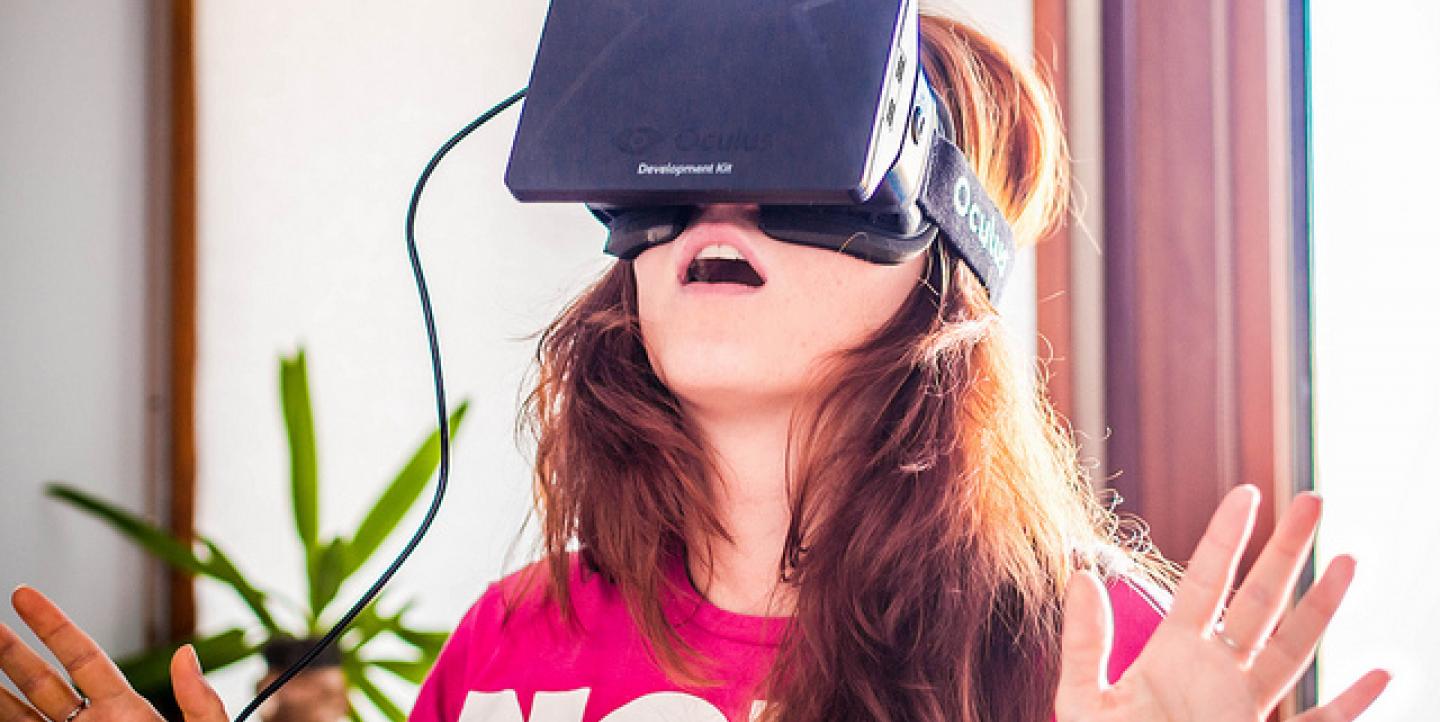Want to get people to care more about the news? Try putting them inside of it.
Once associated largely with gaming, virtual reality is now being used to provide immersive experiences into news stories. To do so, a 360-degree camera system captures a scene that an audience can then experience as if they were there.
That’s the idea behind a new virtual-reality production created by directors Chris Milk and Spike Jonze in partnership with Vice News, called “VICE News VR: Millions March." The eight-minute film brings viewers onto the streets of New York City during the December protests that saw tens of thousands of people demanding greater police accountability. The film debuted last week at Sundance Film Festival.
"My hope is that VR [virtual reality] is the tool we need to stir more compassion for one another," Milk, a music video director and photographer, recently told VICE. "I think VR holds the potential to fundamentally change journalism."
To experience the project, viewers have three main options. They can use a vision-encompassing helmet, or VR device, like the Oculus Rift headset. Alternatively, a new mobile app from virtual-reality developer VRSE, founded by Milk, can be downloaded onto a smartphone and connected to a viewer, such as Google Cardboard, which can be made at home with a piece of cardboard and a phone. Or viewers can download the app and watch the film directly on a phone, which loses some of the 3D features.
Last fall, The Des Moines Register launched its first VR experiment: an immersive, explanatory story of the evolution of the family farm in the U.S., called Harvest of Change. Viewers learn how things like technology, immigration and globalization are changing one family's farm.
The Register and its parent company Gannett hired the New York-based Total Cinema 360 to shoot video for the project to appear on 3D. The project took about three days to shoot and three months to complete, and cost around US$20,000, according to American Journalism Review.
To produce the project, one reporter and one photographer from the Register worked full time with four employees from Total Cinema 360, using both GoPro cameras and Google Glass to capture the footage, according to the ONA 2014 Student Newsroom.
Though Harvest of Change was designed to be experienced on the Oculus Rift, most people still don’t have access to the devices, as they’re used mainly by gamers and developers, and are not commercially available yet. Harvest of Change was also offered via a 2D version online. Gannett recently worked with its local news channel KUSA9 to create its second VR project, which will take viewers into the FIS Alpine World Ski Championships in Vail, Colorado.
But experts say virtual-reality journalism broadcasts are becoming increasingly more accessible to the public. Last year, Facebook acquired the Oculus Rift and now, the device is expected to launch in a consumer version by the end of 2015. Microsoft recently introduced 3D glasses called HoloLens for people to interact with holographic images. And YouTube is expected to unveil 360-degree videos that will support flat videos as well as those being watched on virtual reality headsets, according to The Independent.
Dan Pacheco, a journalism professor at Newhouse School of Public Communications at Syracuse University, told American Journalism Review he thinks VR would be a perfect way to present interactive 3D maps and natural disaster stories. Other possible usages: war zones, sporting events and live-stream video.
And that’s important to get a new generation of news consumers engaged in the world.
“We’re hacking into the audio and visual systems of your brain,” Milk told The New York Times. “A major part of journalism is painting people a picture of what it was like to actually be there. With this, the audience actually feels like they are there.”
Image courtesy of Flickr user Sergey Galyonkin under a Creative Commons license.

